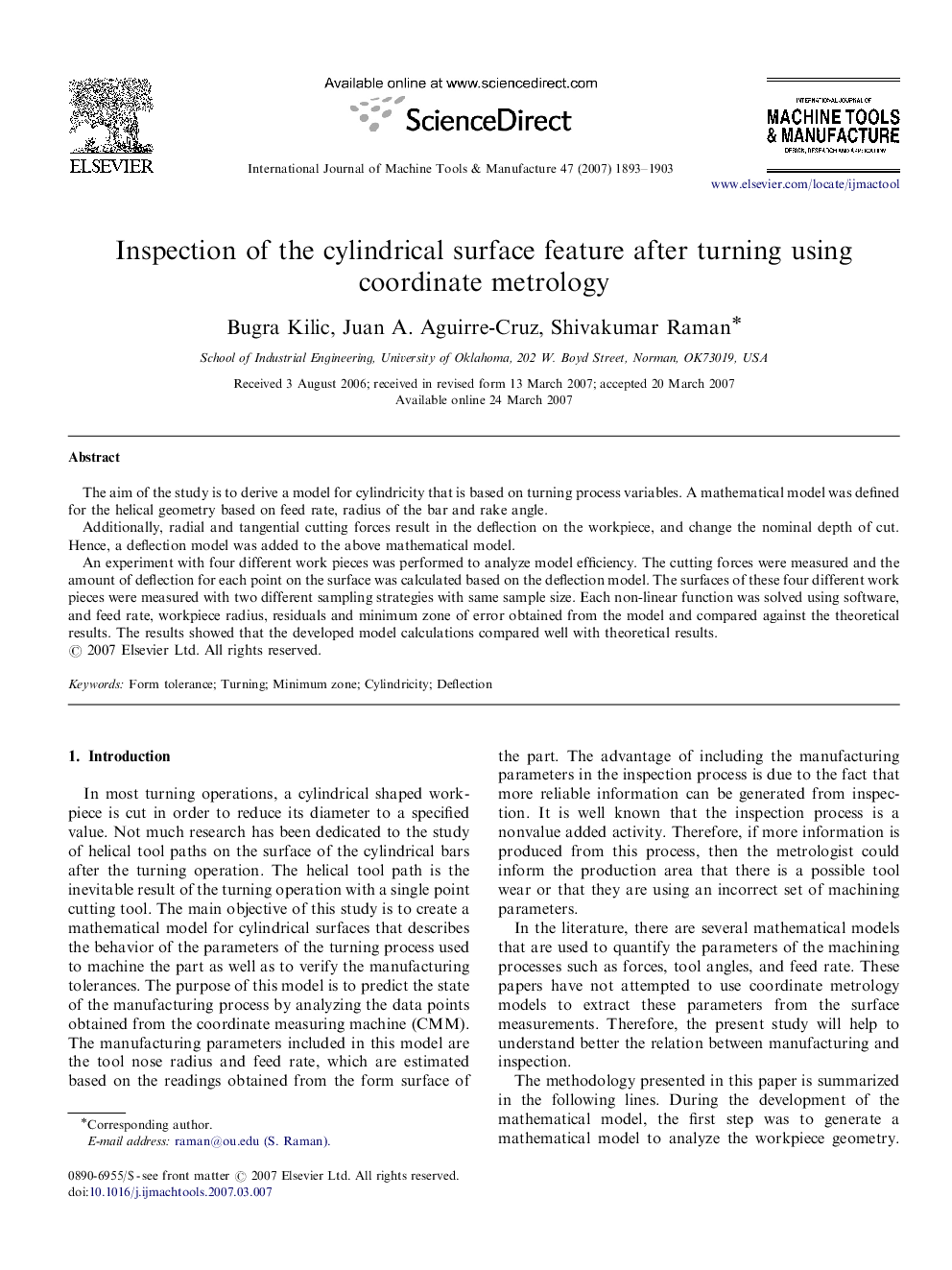| Article ID | Journal | Published Year | Pages | File Type |
|---|---|---|---|---|
| 779044 | International Journal of Machine Tools and Manufacture | 2007 | 11 Pages |
The aim of the study is to derive a model for cylindricity that is based on turning process variables. A mathematical model was defined for the helical geometry based on feed rate, radius of the bar and rake angle.Additionally, radial and tangential cutting forces result in the deflection on the workpiece, and change the nominal depth of cut. Hence, a deflection model was added to the above mathematical model.An experiment with four different work pieces was performed to analyze model efficiency. The cutting forces were measured and the amount of deflection for each point on the surface was calculated based on the deflection model. The surfaces of these four different work pieces were measured with two different sampling strategies with same sample size. Each non-linear function was solved using software, and feed rate, workpiece radius, residuals and minimum zone of error obtained from the model and compared against the theoretical results. The results showed that the developed model calculations compared well with theoretical results.
